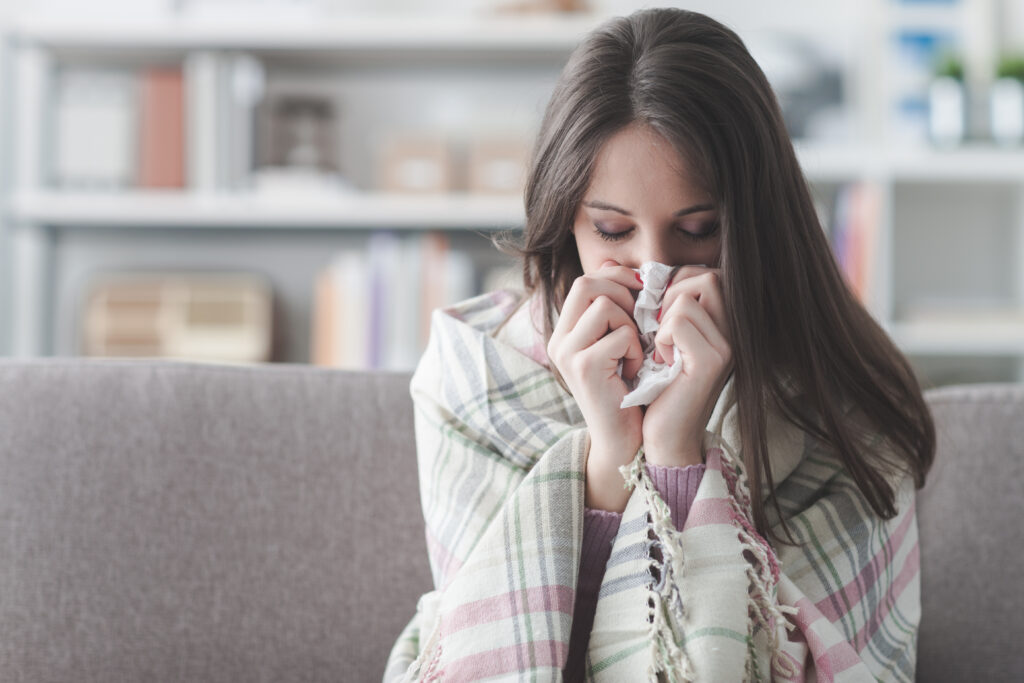As flu season approaches, so does the increased risk of contracting Streptococcal pneumoniae, also known as pneumococcus. Streptococcus pneumoniae is a type of bacteria that can cause pneumococcal disease. There are more than 100 strains of these bacteria1, though it’s important to note that not all strains result in infections. Interestingly, individuals can unknowingly carry the bacteria in their respiratory tract. Understanding the nature of pneumococcus, what dangers it poses, and reliable ways to avoid infection is essential during flu season.

What is Pneumococcus? What Risks Does It Pose?
Pneumococci bacteria are commonly found in the human respiratory tract. According to the Centers for Disease Control and Prevention (CDC), the percentage of carriers can range from 5% to 90%1, depending on age and setting. Out of all these, children usually carry the bacteria for a longer time than others. Despite these large numbers, only a small number of pneumococci lead to infection.
Those that do lead to infection can cause a range of issues impacting the lungs, brain, and other areas of the body. The symptoms may vary depending on the affected body part. Some of these infections include:
- Pneumonia with symptoms like cough, breathing difficulties, chest pain, fever or chills, and confusion.
- Meningitis with symptoms like headache, neck stiffness, fever, and sensitivity to light (photophobia)
- Sinusitis with symptoms like congestion, runny nose, facial pain, and headaches
- Bronchitis with symptoms like a productive cough, wheezing, shortness of breath, chest pain, and a low-grade fever
- Pneumococcus can, in some cases, lead to death.
To diagnose pneumococcal disease, doctors use a mix of physical examination, symptom evaluation, and lab tests. These tests are crucial in confirming the bacterial infection. Because pneumococcal diseases are bacterial, the go-to treatment typically involves taking a course of oral antibiotics.
Prevention
There are various strategies and measures you can take to prevent the contraction and spread of Streptococcus pneumoniae.
Hygiene and Isolation
Like many other respiratory diseases, S. pneumoniae is spread through airborne respiratory droplets found in coughs, sneezes, and more. Because of this, the bacteria are usually spread in households or crowded conditions.3
The most effective way to stop the spread is to avoid contact with others if you are symptomatic. If you can’t avoid being around them, make it a habit to frequently wash your hands and diligently cover your mouth when you cough or sneeze. Masks can also offer levels of protection depending on the quality of the mask used and if it is used correctly. If you are going to be exposed to infected individuals, it can be beneficial to wear a mask, but don’t forget to wash your hands after disposing of the mask.
Vaccines
The CDC recommends a pneumococcal vaccination for at-risk groups, children younger than five, and adults 65 years or older.4 There are four options for pneumococcus vaccination. Choosing the right one depends on many factors, so it is always recommended to talk with a medical professional to help determine which is right for you.
While the protection rate isn’t 100%, pneumococcal vaccines still work to shield against most strains and related infections for both children and adults. Vaccines can also help to lessen the severity of infection.
Indoor Air Quality Systems
As a respiratory disease, pneumococcus spreads easily through coughing or sneezing. It can also survive on surfaces for a considerable amount of time, so touching your mouth, nose, or eyes after touching a contaminated object can lead to infection.
One efficient way in preventing the spread of pneumococcus is an in-home air quality system. While these systems are effective in slowly cleaning the air, they don’t target points of entry- like your front door. One innovative solution, AURA Ion Bar™, uses negative air ions to eliminate and deactivate pathogens at the entry point before they can enter your space. Ion Bar has also been lab tested to eliminate streptococcal pneumoniae on surfaces specifically, allowing you to feel safer in your home.
Learn more about AURA Ion Bar here.
Armed with the right knowledge, precautions, and preventive measures, we can significantly lower the risk of contracting this infection. Remember, prevention is always better than cure, so let’s do our part to stay healthy.
This article has been reviewed and endorsed by Steve Cunnion, Ph.D., M.D., a world-renowned epidemiologist. Dr. Cunnion was the first person to alert the Western world of the SARS outbreak, for which he received the 2003 ProMED Reporting Award. Read more about Dr. Cunnion here.
Resources:
- Streptococcus pneumoniae: Information for Clinicians | CDC
- Photophobia (Light Sensitivity): Causes, Treatments & Prevention (healthline.com)
- Pneumococcal Disease Transmission: Information for Clinicians | CDC
- Pneumococcal Disease Prevention: Information for Clinicians | CDC
- About Pneumococcal Vaccine: For Providers | CDC
- Brooks, T, Behind the Mask; How the World Survived SARS. American Public Health Association, Washington, DC, 2005, p. 11
